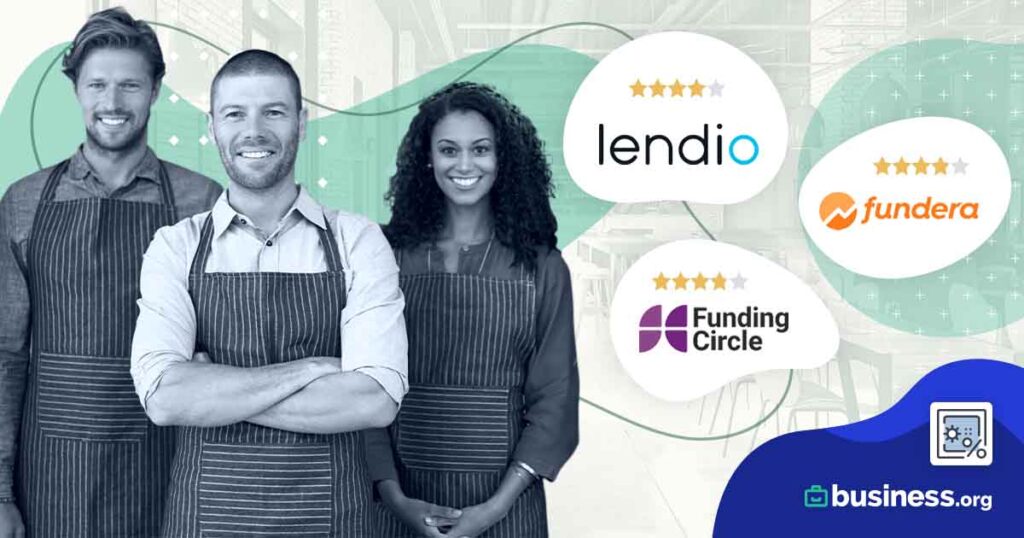We are committed to sharing unbiased reviews. Some of the links on our site are from our partners who compensate us. Read our editorial guidelines and advertising disclosure.
Microloans: What Are They and How Do They Work?
Microloans for small businesses are a powerful option for those who lack easy access to capital or whose credit history holds them back. They can help young businesses get off the ground or expand, paying for anything from new equipment to operating expenses. These loans have low rates, don’t require perfect credit and are usually offered by lenders who help their borrowers succeed.
Let’s look at everything you need to know about this financing option.
Table of contents
What is microlending?
Microlending, sometimes called microcredit, is the business of giving out small loans. Microloans can be anywhere between $50,000 to $100,000. The U.S. Small Business Administration reports that the average microloan is $13,000. Business owners can use these loans to start or expand their venture or project. Microloans are usually issued by individuals or nonprofits instead of by banks or other financial institutions. They usually come with relatively low interest rates and short terms.
Microlending is often associated with funding projects in developing countries, where many small business owners struggle to access traditional sources of capital. But microloans for small businesses are also extremely effective at helping businesses thrive in the U.S.
Certain U.S. communities—such as people of color and women—have also historically struggled to gain access to traditional sources of capital. Many microlenders strive to help disenfranchised communities get the resources they need, and often provide advice and training to support success.
By signing up I agree to the Terms of Use and Privacy Policy.
Who should apply for a microloan?
Microloans are a good fit for small businesses that are in their early stages and need a bit of extra cash to get things off the ground. They can also be helpful to established small business owners who need a little funding for a discrete project that will propel their business forward. Both new startups and established businesses may be able to access microloans too.
Many microlenders have a goal for their lending—for example, to support minority-owned businesses or to help small business owners improve their credit. Good candidates for microloans are small business owners who need a small amount of cash and fit the mission of a particular microlender.
How does microlending work?
Microlending works like other business lending: a potential borrower applies, receives approval, gets access to funds, and then pays the loan back over a period of time with interest.
Before you can apply for a microloan, you have to qualify as a borrower with the lender you want to do business with. Typically, you must be a for-profit small business with average credit; good credit usually isn’t required, and some lenders don’t even check your credit.
Each lender has its own requirements for eligibility, so pay close attention to the details. You may need to be located in a specific region, state, county, or city; come from a certain underrepresented community; or have a particular goal in mind for the funding to support.
Application process
To get a microloan, you’ll typically have to fill out an application, and you might be asked to include some or all of the following:
- Personal information
- Approval for the lender to check your credit
- Two years of personal tax returns
- Recent pay stubs
- A business plan
- A financial statement and/or cash flow projections
- Contracts or purchase agreements
- A personal guarantee or an indication of the collateral you’ll use to guarantee the loan
Established businesses likely must supply more business and financial information, such as business tax returns, balance sheets, income statements, and business licenses and permits.
If you’re approved for your loan and accept a certain amount of funding, you may have to pay fees and/or closing costs. You’ll receive your funds as a lump sum and be able to put it to good use in your business right away just like these entrepreneurs who got microloans.
Repayment
You will be given a certain number of years to repay your loan—three to six years is typical. When you need to start repaying your loan will depend on your lender’s rules. But once repayment begins, you’ll need to provide monthly payments composed of principal and interest by a given date each month for a set number of months.
You can pay extra principal payments if you want to repay the loan faster, and most microlenders will not charge prepayment fees when you do so.
Microloans vs. regular business loans
When it comes to microloans and regular small business loans, there are quite a few differences.
Flexibility
Because microlenders are focused on supporting the community, they tend to be more flexible in terms of credit history and monthly payment amounts.
Financial terms
While they both have maximum limits, microloans are issued for much smaller amounts.
Personal interest
Microlenders spend more time getting to know a business owner on a personal level. To help entrepreneurs succeed, they sometimes provide consulting and training.
What are peer-to-peer microloans?
Certain microloan lenders are actually platforms or programs where individuals can invest money that is packaged into small loans for business owners. Crowdfunding or peer-to-peer lending can be a great way for small business owners to get a boost of cash—if they meet the requirements.
Some of these platforms, such as Kiva and SoLo, provide loans with little to no interest as a service to help cash-strapped borrowers. Some of them require the borrower to solicit contributions from friends and family to prove their creditworthiness.
Reputable microlenders
Considering a microloan? Check out these microlenders with good reputations to see if one might be a match for you.
U.S. Small Business Administration (SBA)
The SBA is the most prominent U.S. microlender, providing loans of up to $50,000 to small businesses and some not-for-profit childcare centers through its SBA Microloan Program. The loans, which average $13,000, are meant to help businesses start and expand their operations. The loans are originated and administered by a network of nonprofit, community-based organizations, such as LiftFund. You can check out this list of SBA providers for your state.
LiftFund
Texas-based nonprofit LiftFund provides loans as low as $500 to businesses in a number of southern U.S. states. The organization focuses on lending to those who struggle to access capital elsewhere: about 77% of LiftFund’s borrowers are Hispanic or African-American, and 38% of them are women. Most borrowers use the funds for working capital or to buy equipment. LiftFund works with borrowers who lack a solid credit history to build up good credit.
Accion Opportunity Fund
California-based nonprofit Accion Opportunity Fund offers small business funding through its lending arm, Accion Opportunity Fund Community Development. It lends primarily to women, people of color, and immigrants, many of whom have been unable to access traditional sources of financing. Its loans range from $5,000 to $100,000 and have rates starting at 5.99%. Borrowers also get access to educational resources, coaching and support networks.
Accompany Capital
New York-based Accompany Capital focuses its lending on immigrants, refugees, and women entrepreneurs in New York City. The organization offers microloans of between $500 and $50,000 with 6- to 36-month repayment terms and no penalty for early repayment. No minimum credit score is required, but the borrower must have a decent history of credit repayment. The funds are intended to help a business get started, expand, or refinance existing debt.

Browse hundreds of loan options, custom-tailored to your business and budget needs, from a single, simple platform.
The takeaway
Microloans are powerful tools for certain businesses, particularly those that may struggle to access capital. Borrowers don’t need an exemplary credit score, and startups don’t need to have too much business experience under their belt to qualify. These loans have the notable advantage of lower rates than typical business loans. And they often come with a side of technical assistance and advice from experienced professionals.
Microloans may be small, but they are mighty: they can help businesses get off the ground or expand, giving them a vital boost toward success.
Would you like to learn more about the ins and outs of business loans? Read How Do Business Loans Work?
Related reading
Microlending FAQs
Microloans are small loans of up to $50,000, or sometimes $100,000, that entrepreneurs can use to launch or grow their business. These loans usually have lower rates and shorter terms than larger traditional business loans. They are often aimed at business owners in certain communities or locations, and frequently come with guidance and support.
Microloans are often provided by nonprofit financial organizations or even by individuals through peer-to-peer lending. Some microloans must be used for specific purposes, while others can be used for anything a business needs. Once a prospective borrower applies and is approved, the lender provides the funding in one lump sum, after which the borrower must pay the principal and interest back in regular installments over a set number of years.
Why do microloans have low rates?
Microloans usually have lower rates than typical business loans from traditional lenders for a couple of reasons. One is that the loans are small and for a relatively short term, so the lender is not taking a very large risk in providing each one. Another reason is that in many cases microloans are designed to prioritize the success of the recipient over the profit of the lender.
How much funding do microloans provide?
Microloans are typically $50,000 or less, though some consider business loans up to $100,000 to be microloans. Microloans for US borrowers can be as little as $500, though loans of $10,000 to $15,000 are the most common.
Do you have to pay back microloans?
Yes, microloans must be paid back, along with interest. (Some borrowers, like Kiva and SoLo, charge 0% interest though.) Repayment occurs in regular—usually monthly—installments over the course of several years, perhaps three or six years.
Why do people apply for microloans?
People look to microloans to finance business expenses like startup costs, operational costs, equipment purchases or upgrades, and debt refinance, among other things. People may apply for microloans as opposed to larger business loans because they aren’t able to access capital from a traditional lender. Business owners from communities supported by microlenders may find a microloan a good option for securing startup financing while receiving technical support and guidance.
Disclaimer
At Business.org, our research is meant to offer general product and service recommendations. We don't guarantee that our suggestions will work best for each individual or business, so consider your unique needs when choosing products and services.




